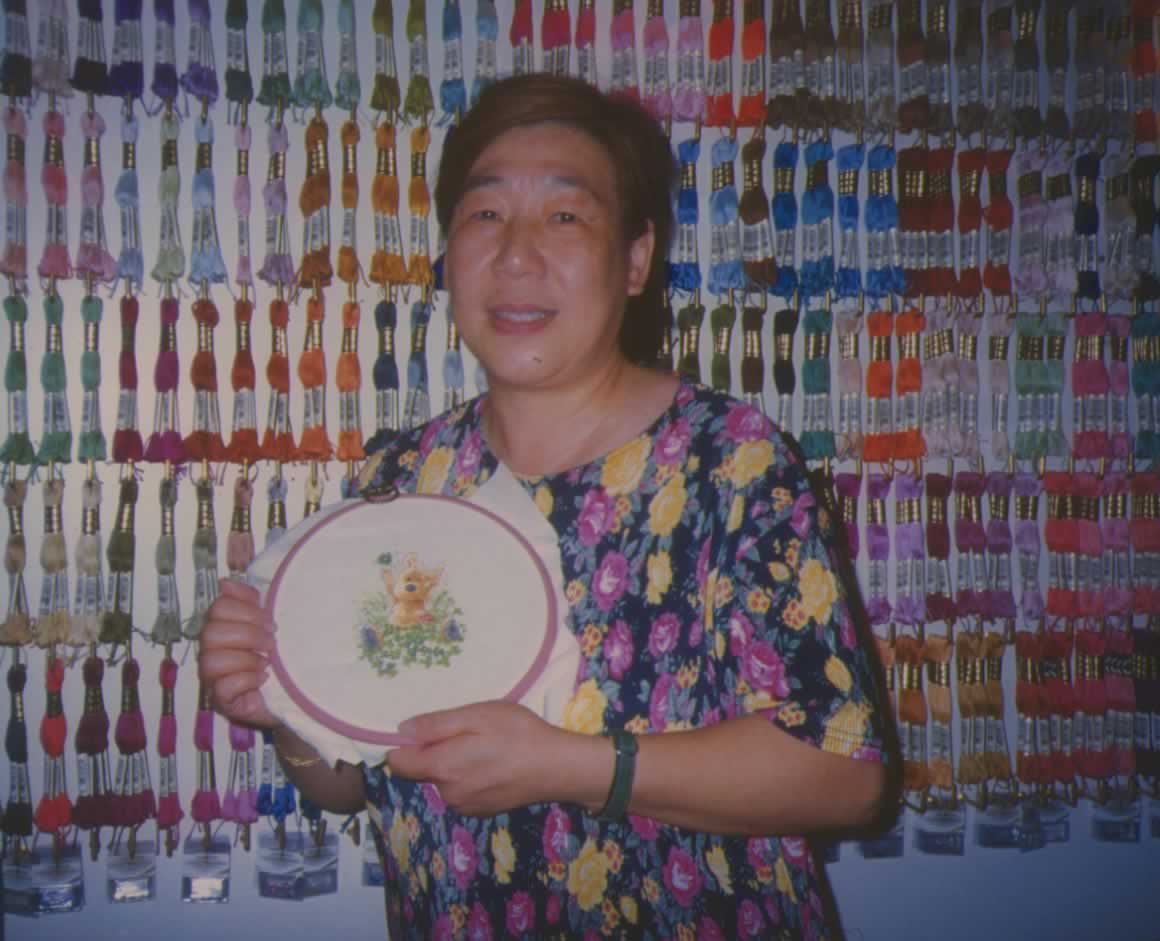Cross-stitching
Paintings in thread
By Jerry Guo
Chan Man, the owner of Stitchart, a cross-stitching shop in the Mid-Levels, remember the days when she first tried cross-stitching 11 years ago.
“I saw it in Britain for the first time. Its beautiful appearance and distinctive working process absolutely charmed me. After working the first piece, I got addicted to it,” said Miss Chan.
Cross-stitching, renowned for its rich colors and lifelike effects, is one of the oldest stitches in the history of textiles.
The oldest piece of cross-stitching came from Central Asia. However, cross-stitching started in the
Middle Ages. Ladies copied patterns from carpets that their husbands brought back with them from the crusades in the 11th and 12 centuries.
Miss Chan said, “In recent years, cross-stitching has gained in popularity in Hong Kong. The number of hobbyists and retail shops has been rising.”
By using different types of threads of more than 400 colors, a cross-stitched work can be exquisite. It also looks three-dimensional because of the special stitching.
Some people might believe that cross-stitching takes great effort and requires special skills. According to Miss Chan, however, it is suitable for all people.
Hobbyist Sophie Liu with her work. “Unlike Chinese embroidery, it is not necessary to have professional knowledge or much training before taking up cross-stitching. Actually, it is simply placing X-shaped stitches corresponding to symbols on a pattern onto the fabric to reveal a picture. Thus those who have no experience in embroidery can start stitching after half-an-hour's training.
“The pattern is easy to read. By following it, everyone can create the exact picture,” said Miss Chan.
Before stitching, stitchers can design their own patterns by the use of special computer software. “To convert a subject into a cross-stitched pattern, stitchers need to photograph it, and then scan the photo by computer to get the pattern,” said Miss Chan.
“To start with, it is best to begin stitching at the center of the fabric. Stitchers can find it by folding the fabric in half and then in half again. The corner where the folds meet is the center. It should coincide with the center of the design on the pattern, usually indicated by arrows. Stitchers bring the threaded needle up from the back of the fabric repeatedly until the work is finished.”
At the last stage, the work is washed and air-dried. The time needed to finish a work depends on one’s skill and the complexity of a design.
There are several techniques in making nice artwork using cross-stitching.
Miss Chan said, “Firstly, knots should be avoided because they will show up through the fabric once it is framed. This can be done by leaving a tail when starting or ending the thread, and having it naturally covered by stitches.
“Secondly, people must be careful when pulling threads while stitching because the tension will greatly affect the appearance of the finished work.”
According to Miss Chan, people take up cross-stitching for different reasons.
“Some hobbyists appreciate the art of cross-stitching. Some take it up just for fun,” she said. “Some old people regard it as a way to kill time. Little girls learn it because their mothers told them to do so, and white-collar workers may use it to release pressure.”
Julie Dalgliesh, 54, a British accountant, took up cross-stitching when she was 6.
“I really love it,” she said. “At first I just stitched for fun. Then I found it could relieve pressure of work. That’s why I still stitch three or four times a week, though I am busy with my work now.”
For Connie Chin, 28, cross-stitching provides gratification. She said it is a great pleasure to look at the fine appearance of her own work.
“The trend will continue. As the pace of life quickens and pressure increases, this easy and peaceful hobby will have larger room for development,” said Miss Chin.

.jpg)